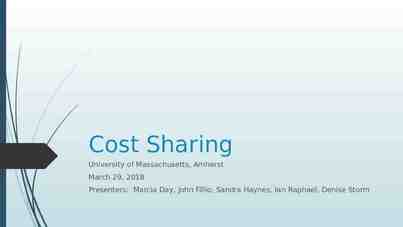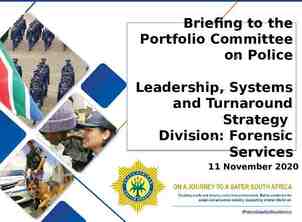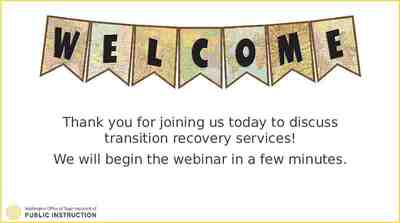Chapter 2 1 The ATS oversight Organization
39 Slides123.48 KB
Chapter 2 1 The ATS oversight Organization
2 Course Objectives At the end of this course the participant should be able to: Describe the functions of an ATM/SAR oversight organization; Highlight an ATM/SAR inspector’s role within the ATM oversight organization; Demonstrate an understanding of State safety management responsibilities; State the duties and responsibilities an ATM/SAR inspector; Develop safety oversight tools for oversight of ATM & SAR providers; List requirements for licensing ATM personnel; Describe reviews and approvals of proposed changes to the airspace system; Perform an audit of an ATS & SAR service provider; Write and disseminate an audit report; and Develop technical guidance material.
3 Introduction While elimination of aircraft accidents and/or serious incidents remains the ultimate goal, it is recognized that the aviation system cannot be completely free of hazards and associated risks. Human activities or human-built systems cannot be guaranteed to be absolutely free from operational errors and their consequences.
4 The Centrality of ATM Safety to the aims and objectives of ICAO The aims and objectives of the International Civil Aviation Organization are to develop the principles and techniques of international air navigation to foster the planning and development of international air transport so as to: Encourage the development of airways, airports, and air navigation facilities for international civil aviation; Promote safety of flight in international air navigation
5 The Concept of Safety Aviation is an environment of many risks ranging from weather, complex equipment, high energy – high speed mass transportation, terrain etc. For this reason, safety in aviation is highly related to risk management. Safety is defined as “the state in which the possibility of harm to persons or of property damage, is reduced to and maintained at or below an acceptable level, through a continuous process of hazard identification and safety risk management.” Hazards and risks cannot be totally eliminated as this would simply mean grounding all aircraft and shutting down all airlines. Risk free activities cannot be guaranteed, so the risk must be somehow mitigated – controlled.
6 The Concept of Safety No human activity or system can remain free from hazard and errors and therefore total elimination is unattainable. Equally, ultra-safe systems cannot exist as this would imply no need for monitoring, preventing or anticipating the hazards and risks. A lapse in detection and management of hazards leads to an unsafe environment. It is deemed to be a lack of safety. Safety is therefore a very difficult concept to measure, since it is defined by the individual activities and its result is the absence of something incidents & accidents. We have trouble in measuring and improving this concept which is defined by the absence of data yet have to take action to prevent incidents and accidents. Safety is therefore a state of operation where there is freedom from danger and/ or injury and its measurement in based on the protections we attempt to place in order to mitigate the unwanted outcomes.
7 The concept of Safety Essentially, there is a possibility that failures will occur no matter how much preventive effort is put in place. The essence of safety management and hazard mitigation is to control and minimize errors to acceptable levels so that even if undesirable occurrences were to happen, the damage will be in controlled proportions. Safety depends on people and systems (rules and regulations, procedures, equipment, facilities etc.) When incidents or accidents do occur, it is a pointer to a system failure and not simply a failure of a person or people.
8 The concept of Safety Safety is a core value-offering of rapid and dependable air services. International cooperation on aviation safety by governments and industry groups, through ICAO, has helped to make commercial air transport the safest way to travel. The 193 countries who cooperate through ICAO are currently working toward their agreed global safety target of zero fatalities by 2030. This is in tandem with the strengthening of their regulatory capacities, while pursuing a range of programmes and targets relevant to current core areas of global aviation safety planning, oversight, and risk mitigation.
9 The concept of Safety To ensure safety requires that: Safety audits be conducted on a regular and systematic basis by personnel qualified through training, experience and expertise. The auditors/inspectors have a full understanding of relevant Standards and Recommended Practices (SARPs), Procedures for Air Navigation Services (PANS), safe operating practices and Human Factors principles. The auditors/inspectors be supplied with necessary tools to facilitate conduct of their oversight functions.
10 ATS Oversight Organization Within the context of air traffic safety oversight, an ANSP and the ATS Oversight Organization must each meet certain safety management responsibilities. The ANSP, is that relevant authority designated by the State to provide ATS (flight information service, alerting service, air traffic advisory service and air traffic control service) in the airspace concerned. The ANSP is therefore responsible for safety management and the SMS which it is required to establish. The ANSP, not the regulator (ATS oversight organization), is responsible for the safe, regular and efficient conduct of operations, including compliance with any laws or regulations and standards. This obligation extends to any contractors that the ANSP might
11 ATS Oversight Organization The ATS oversight organization/inspectorate is the relevant authority designated by the State to establish safety standards for, and provide independent safety oversight of ATS Providers. The ATS safety organization is responsible for validation and verification of an ANSP’s safety management and its SMS as part of its oversight functions. Within the ATS oversight organization, ATM inspectors perform oversight of ANSP’s compliance with the applicable regulations, safety standards, directives, and procedures.
12 ATS Oversight Organization The Air Traffic Service Safety Oversight Organization: 1) establishes safety standards, and; 2) provides independent regulatory oversight of the Air Traffic Services Organization. In some States, Search and Rescue coordination and administration is part of the ANSP’s functions while in others the SAR function is handled by a separate entity designated by the State. SAR oversight may therefore be a function of CAA ATM & SAR inspectorate or a separate function under ANS oversight. Whichever the case, SAR operations must nevertheless be oversighted.
13 ATS Oversight Organization An ATS oversight organization accomplishes safety oversight in a variety of ways, including, but not limited to: Developing and amending relevant State regulations; Developing and amending technical guidance for regulatory oversight and licensing functions; Validating and verifying ANSP related processes and/or procedures used for introduction of new separation standards, and modification of existing separation standards; Approving new procedures e.g. airspace designs and flight procedures; Conducting scheduled/routine and non-scheduled inspections/audits; Validating the Air Traffic Organization safety related processes e.g. Safety risk assessments; Reviewing and evaluating the ANSPs Manual of operations;
14 ATS Oversight Organization Analyzing and authorizing controls used by the Air Traffic Organization to mitigate hazards; Participating in operational review and analysis of information pertaining to the Air Traffic Organization employees, operations and programs. Developing and amending regulations and guidance for regulatory oversight and credentialing functions; Participating in the development and harmonization of air traffic control international standards; and Providing regulatory oversight of the Air Traffic Organization Safety Management System;
15 Safety Oversight of ATS Providers ATS oversight organizations provide aviation safety oversight of ATS and/or SAR providers through: Issuing licenses, certificates and approvals (as applicable); Performing surveillance through activities such as: Continuous monitoring activities; Safety performance monitoring; Audits and inspections; and Co-operating with other aviation safety services/organizations including regional safety oversight organizations.
Safety Oversight of an ATS Provider 16 ICAO requires States to establish ATS oversight organizations to perform safety oversight of the following activities and personnel: Air traffic control (ATC) services; Safety personnel, such as air traffic controllers; Airspace design Flight Procedures design and validation; Search and rescue operations Others supporting services include: Communication, Navigation, and Surveillance services; Aeronautical Telecommunication services; Meteorological service for air navigation; Aeronautical Information Services and/or Aeronautical Information Management; Cartographic services
17 ATS safety oversight, the Safety Management Systems and The State Safety Programme States are required to establish and maintain a State Safety Programme (SSP) to carry out their safety management responsibilities at an acceptable level of performance. State Safety Programme is defined as an integrated set of regulations and activities aimed at improving safety. It is a management system for the regulation and administration of safety by the State. A State’s SSP should include the following components: Safety policy, objectives, and resources; State safety risk management (SRM); State safety assurance; and State safety promotion.
18 ATS safety oversight, the Safety Management Systems and The State Safety Programme The objectives of the SSP are to: a) ensure the State has an effective legislative framework in place with supporting specific operating regulations; b)ensure SRM and safety assurance coordination and synergy among relevant State aviation authorities; c) support effective implementation and appropriate interaction with service providers’ SMS; d)facilitate the monitoring and measurement of the safety performance of the State’s aviation industry; e) maintain and/or continuously improve the State’s overall safety performance.
19 ATS safety oversight, the Safety Management Systems and The State Safety Programme Aviation service providers, such as ANSPs, are required to establish and implement Safety Management Systems (SMS). SMS is defined as a systematic approach to managing safety, and includes the necessary organizational structures, accountabilities, policies and procedures developed by the service provider for managing safety. SMS is necessary for an ATS and/SAR organization to identify hazards and manage safety risks encountered during the delivery of its products or services.
20 ATS safety oversight, the Safety Management Systems and The State Safety Programme An SMS includes key elements that are essential for hazard identification and safety risk management by ensuring that: the necessary information is available; the appropriate tools are available for the organization’s use; the tools are appropriate to the task; the tools are commensurate with the needs and constraints of the organization; and decisions are made based on full consideration of the safety risk. Service providers play a critical role in achieving and maintaining safety in the State’s aviation system, SSP must therefore work hand in hand with the service providers’ safety management systems.
21 ATS safety oversight, the Safety Management Systems and The State Safety Programme The SSP Policy framework should contain the following: A legislative background; The responsibilities and accountabilities; The accident and incident investigation component, and; Finally the enforcement policy. The SSP policy should cover all areas of the aviation industry; bearing in mind that it might be more practical and efficient to create multiple frameworks for each area, in order to achieve specificity and relevance.
22 ATS safety oversight, the Safety Management Systems and The State Safety Programme ICAO requires States to implement formal safety management procedures for their ATS systems. ANSPs are also required to document all activities undertaken in an SMS, and to retain this documentation for such period of time as is specified by the appropriate authority.
23 ATS safety oversight, the Safety Management Systems and The State Safety Programme An SMS is an integrated collection of processes, procedures, and programs that ensure a formalized and proactive approach to system safety through risk management. Risk assessments are required for all changes to identify safety impacts. The SMS is a closed-loop system ensuring that all changes are documented and all problems or issues are tracked to conclusion.
24 ATS safety oversight, the Safety Management Systems and The State Safety Programme The four components and twelve elements that comprise the ICAO SMS framework are as follows: 1. Safety policy and objectives 1.1 Management commitment and responsibility 1.2 Safety accountabilities 1.3 Appointment of key safety personnel 1.4 Coordination of emergency response planning 1.5 SMS documentation
25 ATS safety oversight, the Safety Management Systems and The State Safety Programme 2. Safety risk management (SRM) 2.1 Hazard identification 2.2 Safety risk assessment and mitigation
26 ATS safety oversight, the Safety Management Systems and The State Safety Programme 3. Safety assurance 3.1 Safety performance monitoring and measurement 3.2 The management of change 3.3 Continuous improvement of the SMS
27 ATS safety oversight, the Safety Management Systems and The State Safety Programme 4. Safety promotion 4.1 Training and education 4.2 Safety communication
28 ATS safety oversight, the Safety Management Systems and The State Safety Programme Safety policy and objectives, Safety Risk Management (SRM), safety assurance, and safety promotion are collectively known as the “four pillars” (or components) of SMS. Safety policy is the documented organizational policy that defines leadership commitment, responsibility, and accountability for safety. Safety policy also identifies and assigns responsibilities to key safety personnel. SRM is a process within the SMS composed of describing the system; identifying the hazards; and analyzing, assessing, and controlling risk. SRM includes processes to define strategies for monitoring the safety risk of the airspace system. SRM complements safety assurance.
29 ATS safety oversight, the Safety Management Systems and The State Safety Programme Safety assurance is a set of processes within the SMS that verify that the organization meets or exceeds its safety performance objectives and that function systematically to determine the effectiveness of safety risk controls through the collection, analysis, and assessment of information. Safety assurance affords the ANSP the chance to evaluate processes and practices, providing confidence that the implemented measures achieve their intended objectives. Safety assurance requires continuous surveillance, recording of performance and evaluating processes and practices.
30 ATS safety oversight, the Safety Management Systems and The State Safety Programme Safety promotion refers to the communication and distribution of information to improve the safety culture and the development and implementation of programs and/or processes that support the integration and continuous improvement of the SMS within the ANSP. Safety promotion allows the ANSP to share and provide evidence of successes and lessons learned.
31 ATS safety oversight, the Safety Management Systems and The State Safety Programme Successful safety management processes identify hazards with the potential to adversely affect safety. These processes also provide effective and objective mechanisms to assess the risk presented by hazards and implement ways to eliminate these hazards or mitigate the risks associated with them. The objective of these processes is to facilitate achievement of an acceptable level of safety Performance while balancing the allocation of resources between production and protection.
32 ATS safety oversight, the Safety Management Systems and The State Safety Programme Safety management processes are documented in a toplevel SMS manual, which serves to communicate the organization’s SMS framework internally and externally. An SMS manual should: inform ANSP employees and contractors about the goal of the SMS, describe the interrelationship among the four components of the SMS, and instruct readers on the process of identifying safety hazards and mitigating risk in the airspace system.
33 ATS safety oversight, the Safety Management Systems and The State Safety Programme Safety risks are conceptually assessed as acceptable, tolerable, or intolerable. Safety risk assessment techniques may range from formal statistical modeling, to dynamic simulations, to qualitative judgments from content experts. The ANSP(s) must conduct the analysis at the appropriate level of complexity and rigor for the scope and immediacy of the potential hazard. Safety risks assessed as initially falling in the acceptable region are acceptable as they currently stand and require no action to bring or keep the probability and/or severity of the consequences of hazards under organizational control.
34 ATS safety oversight, the Safety Management Systems and The State Safety Programme Safety risks assessed in the tolerable region are acceptable provided that appropriate mitigation strategies are implemented by the organization. A safety risk initially assessed as intolerable may be mitigated and subsequently moved into the tolerable region provided that such risks remain controlled by appropriate mitigation strategies. Risks assessed as initially falling in the intolerable region are unacceptable under any circumstances. The probability and/or severity of the consequences of the hazards are of such a magnitude, and the damaging potential of the hazard poses such a threat to safety, that immediate mitigation action is required.
35 ATS safety oversight, the Safety Management Systems and The State Safety Programme An understanding of SMS and SRM is crucial to the work of an ATM & SAR inspector because Safety Management is at the core of surveillance activities and determination of compliance with requirements. Understanding the SMS framework will guide the ATM/SAR inspector/auditor in knowing what to expect from an Air Traffic services and/or SAR service provider. The ATM & SAR inspector is encouraged to study the ICAO Safety Management Manual - Doc. 9859 to learn more about SMS and SRM.
36 The role of the ATS Inspectorate with Regards to an ANSPs SMS The ATS inspectorate has the following responsibilities regarding safety oversight of an ANSP SMS: Establish the requirements for the SMS in accordance with Annexes 11 and 19 to the Convention on International Civil Aviation, and ICAO Document 4444 (ATM/501), Procedures for Air Navigation Services, Air Traffic Management; Approve/accept the ANSP’s SMS manual and any changes to the SMS manual;
37 The role of the ATS Inspectorate with Regards to an ANSP’s SMS Monitor compliance with safety standards and the SMS, by: Requiring the ANSP to provide reporting, as requested, of the status of the SMS, including information on safety occurrences/data e.g. ATC incidents, loss of separation etc. along with investigation reports and mitigation measures proposed. Monitoring corrective actions taken by the ANSP to assure resolution of identified safety hazards.
38 The role of the ATS Inspectorate with Regards to an ANSP’s SMS If an ANSP’s SMS is not effectively dealing with hazards, it is the job as an ATM Inspector to identify that a formal audit needs to be performed to assess the cause, and the results reported to the ANSP for appropriate corrective action. It’s also the ATM inspector’s responsibility to perform audits to make sure the SMS requirements are being complied with and monitored for effectiveness, and if not – that corrective action is being taken. Conversely, It is also the responsibility of the ANSP providing ATS for the airspace system to develop strategies to ensure implementation of minimum safety standards and mitigations, and then track their effectiveness.
End of Chapter 2 39












































